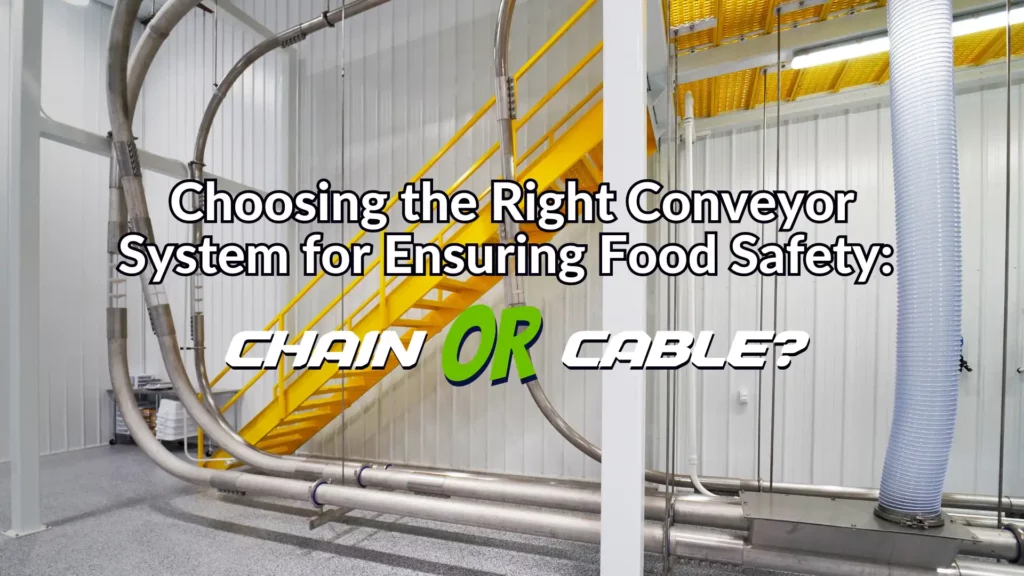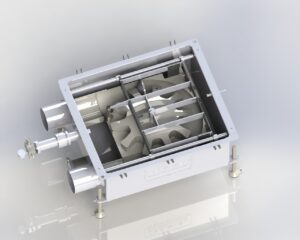In the food processing industry, every step must align with stringent safety standards. In order to do that, having the right conveyor system for ensuring food safety is a must. Contamination risks loom large, threatening recalls, fines, and reputational damage with every misstep. So, here’s a guide that will help you decide which tubular drag conveyor- cable or chain – is the right option for your manufacturing facilities.
What Is the Right Conveyor System for Ensuring Food Safety – Chain or Cable?
The right conveyor system for ensuring food safety depends on the specific needs of your processing facility. Chain disc conveyors are suitable for heavy-duty applications, while cable conveyors excel in handling delicate materials that require gentle transportation. The choice between the two hinges on factors such as material type, sanitation requirements, and the overall goal of maximizing food safety in your facility.
Navigating the Choice Between Chain and Cable Conveyor Technologies
When it comes to food processing, ensuring food safety is of utmost importance. A single contamination incident can lead to a recall, significant fines, and loss of consumer trust. A tubular conveying system is widely used in food processing facilities to transport materials, such as powders and granules, safely and efficiently. However, with the availability of multiple options, such as chain or cable-based tubular conveyor systems, it can be challenging to choose the right one for your facility.
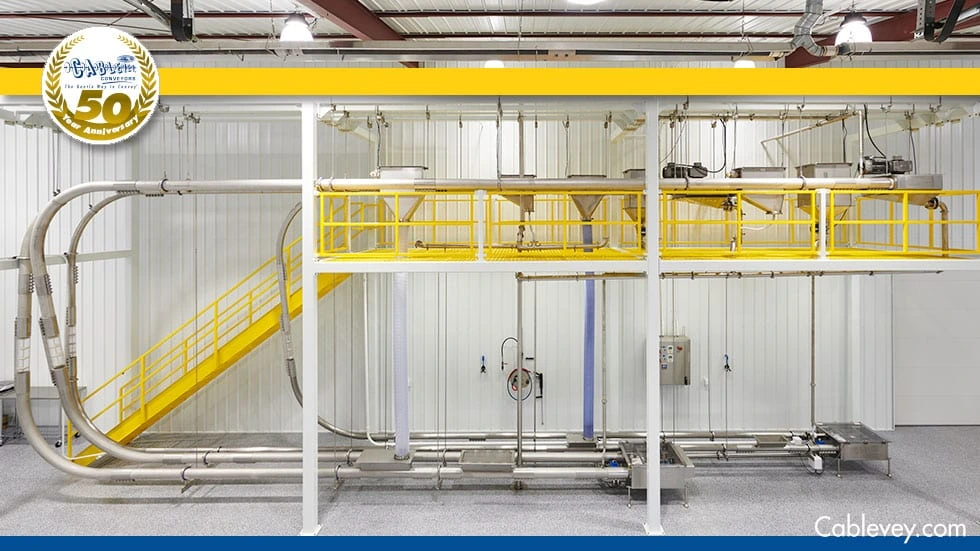
What Are Tubular Drag Conveyors?
Unlike the traditional conveyor belt system, tubular drag conveyors, also known as tube disc industrial conveyor systems, are a type of mechanical conveying system that transports bulk materials such as powders, granules, and pellets through a tube with a chain or cable mechanism. The chain or cable is attached to discs that move the material along the tube.
The two most common types of tubular drag conveyors are the chain and Cablevey disc conveyors. The chain disc conveyor uses a chain to move the material and is suitable for heavy-duty applications. On the other hand, the Cablevey disc conveyor uses a cable to move the material and is suitable for delicate materials that require gentle handling.
Both types of tube disc automated conveyor systems are designed to transport materials safely and efficiently, making them a popular choice in the food processing industry, where food safety is of utmost importance.
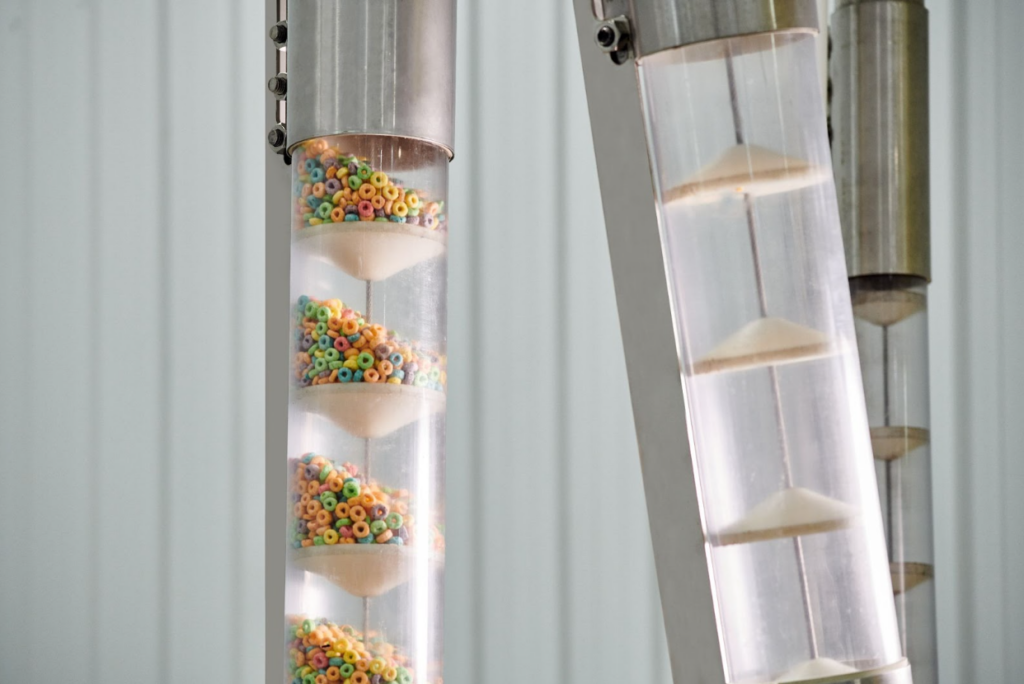
How Tubular Drag Cable Conveyors Maximize Food Safety in the US Food Industry?
One of the most significant advantages of using a tubular drag cable automated conveyor system in food processing is their ability to maximize food safety. Keeping food free from contaminants and ensuring it meets the highest safety standards is essential to protect the health and well-being of consumers.
To ensure adherence to food safety, the United States has several regulatory bodies responsible for overseeing food safety. These include the FDA, USDA, and OSHA. The FDA oversees the safety of the food supply, including food additives and regulation of food labeling.
Meanwhile, the USDA is responsible for the safety of meat, poultry, and egg products, as well as regulating their labeling and inspection. OSHA’s responsibility is to protect workers in food processing facilities from safety and health hazards.
The Impact of the Food Safety Modernization Act (FSMA) and Potential Hazards of Entrapped Food Particles
These governing bodies have implemented diverse rules that demand adherence from food manufacturers to guarantee the safety of their products. An instance of such regulations is the Food Safety Modernization Act (FSMA), introduced by the FDA.
The FSMA is designed to proactively prevent foodborne illnesses, representing a shift from a reactive approach to responding to contamination to a preventive strategy. The entrapment of food particles can result in a range of health and business risks, encompassing:
- Cross-contamination,
- Bacterial growth,
- Food spoilage,
- Food poisoning,
- Difficulty maintaining food safety and sanitation standards,
- Failure to meet regulatory requirements,
- Increased risk of product recalls,
- Loss of consumer trust,
- Reputation damage.
Which Conveyor System Maximizes Food Safety and Why?
In the food industry, maintaining sanitation and food safety is of utmost importance to prevent product contamination. Even a slight foreign matter or allergen entering the production process can lead to the discarding of an entire batch of food products, resulting in financial losses and a damaged brand reputation.
Line changeovers, where different product lines are run within a single shift or day, have become a focal issue, and processing plants are expected to maintain stringent levels of cleanliness and allergen-free operations.
Luckily, conveyor engineering has evolved, and traditional belt conveyor manufacturers are thinking about shifting to tubular drag conveyors. These provide a remedy for this issue by delicately transporting dry bulk food products to discharge points within fully enclosed, dust-free conveying tubes.
This method effectively prevents the introduction of foreign substances into the product stream and ensures that dust generated during transport remains contained. Mitigating health risks and reducing the potential for dust explosions in the production environment is guaranteed, but let’s check both options and help you pick the most suitable one for your manufacturing needs.
Chain Disc Conveyors
Tubular chain conveyor systems, designed to adhere to FDA sanitation standards, boast a polished stainless steel conveyor roller chain or link chain known for its resistance to acid and corrosion. However, maintaining the cleanliness of the chain poses a more intricate task in comparison to a tubular cable conveyor, especially given the immersion of the entire chain in the conveyed food.
Notably, roller chains can lead to the accumulation of food particles between plates, pins, and bushings. The retention of water post-cleaning may create conditions favorable for bacteria growth and potential contamination of subsequent products. In the realm of conveyor manufacturing, particularly within the domain of a belt conveyor system, this challenge is mitigated through specialized cleaning techniques.
Various mechanisms of cleaning conveyor belts, such as brush boxes, chain knockers, and wet clean-in-place (CIP) systems, are available to address the buildup of food particles not only from the chain but also from the conveying tubes and associated equipment. These cleaning practices play a pivotal role in upholding the hygiene standards essential for industries relying on belt conveyors for their material handling needs.
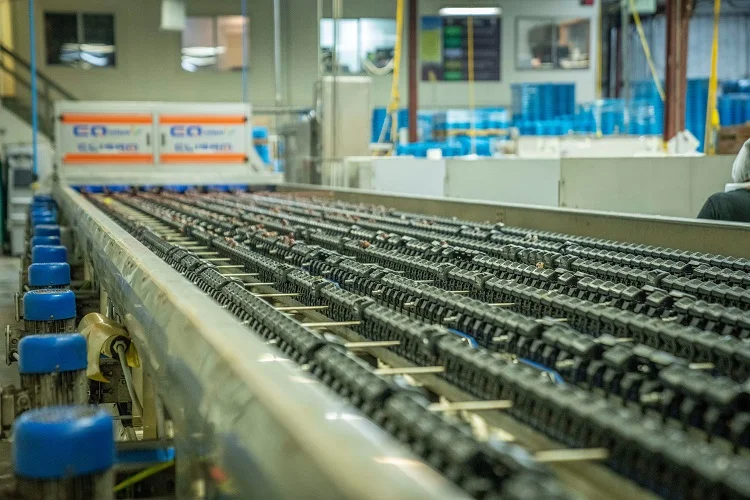
Cablevey Disc Conveyors
Tubular cable conveyor solutions outshine chain conveyors by minimizing the risk of trapping food residue. The uniform and smooth stainless steel cable, entirely nylon-sealed, prevents debris accumulation within the cable strands. Compared to chain disc conveyors, Cablevey disc conveyor systems offer superior dry and wet cleaning options, including air knives, brush boxes, urethane wipers, bristle brushes, inline sponges, and multi-step CIP (self-cleaning) wet cleaning.
It is noteworthy that conveyor systems manufacturers like Cablevey make disc conveyors that exhibit a remarkable ability to handle delicate products during the conveying process. In fact, many food items that are typically damaged during conveyance are transported safely and damage-free with cable drag and disc conveyors.
The core principles ensuring the gentle operation of cable disc conveyors include the utilization of low speed, employing a continuous cable as the conveying medium instead of individual flights or rollers, and implementing a circular pocket design that minimizes direct contact with the material.
As the material moves along the conveyor tube, it is evenly spaced out, preventing any backpressure that could lead to damage. Additionally, the entire system is enclosed, which ensures that there are no sudden changes in temperature or humidity that could negatively impact the product. In the video below, you can check how Cablevey’s wet and dry cleaning works.
Manufacturing Conveyor Systems – Cablevey Conveyors Has Some of the Best Options on the Market
Choosing the right automatic conveyor system is essential to ensure food safety in the food processing industry. Tubular drag conveyors, such as chain and Cablevey disc conveyors, are commonly used for this purpose, unlike the more traditional options, such as conveyor belt systems.
While both types of conveyors transport materials safely and efficiently, Cablevey disc conveyors have several advantages over chain disc conveyors, especially when it comes to food safety. They are less likely to trap food residue and are easier to clean, reducing the risk of contamination.Moreover, they offer more options for dry and wet tube conveyor cleaning. Therefore, tubular drag cable conveyor systems are an ideal solution for food processing facilities that aim to maximize food safety and prevent contamination. Find more about our systems and contact us at Cablevey Conveyors. We’ll make sure you make the right choice for your manufacturing.

